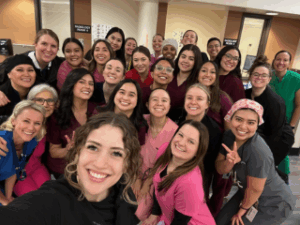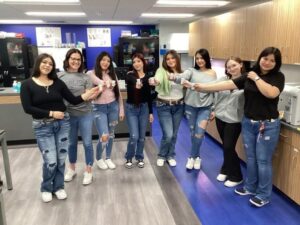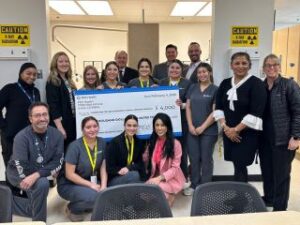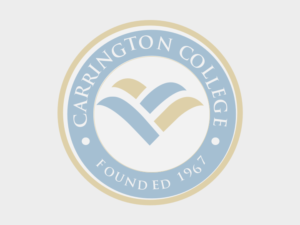 Dentistry has seen a significant evolution over the past few decades, especially in regard to making procedures less painful. Although a significant percentage of the population still experiences dental phobia, advancements in computer machinery have made many of the most dreaded procedures essentially painless. Such developments include the intra-oral computer camera, digital X-ray imaging and treatment of decay with air abrasion.1 These tools have transformed the field of dentistry from a seemingly medieval practice to one that is highly specialized. Dental lasers are perhaps the most important development in recent history for the profession, as these devices have made feared procedures much more endurable for patients. Though lasers have been used by dentists for two decades, a recent development by Convergent Dental, Inc. has expanded on their capabilities.2 For those in dental hygienist schools, this development could be a major benefit to the patient-dentist relationship. If dental professionals can lessen the anxiety of those in the chair, potentially more patients will stop avoiding the dentist and prioritize their oral hygiene.
Dentistry has seen a significant evolution over the past few decades, especially in regard to making procedures less painful. Although a significant percentage of the population still experiences dental phobia, advancements in computer machinery have made many of the most dreaded procedures essentially painless. Such developments include the intra-oral computer camera, digital X-ray imaging and treatment of decay with air abrasion.1 These tools have transformed the field of dentistry from a seemingly medieval practice to one that is highly specialized. Dental lasers are perhaps the most important development in recent history for the profession, as these devices have made feared procedures much more endurable for patients. Though lasers have been used by dentists for two decades, a recent development by Convergent Dental, Inc. has expanded on their capabilities.2 For those in dental hygienist schools, this development could be a major benefit to the patient-dentist relationship. If dental professionals can lessen the anxiety of those in the chair, potentially more patients will stop avoiding the dentist and prioritize their oral hygiene.
Solea dental laser system
Convergent Dental has teamed up with Cogmedix to manufacture the Solea laser system. The company announced the release of its new Solea CO2 laser system earlier this year. Solea is the first CO2 laser approved by the U.S. Food and Drug Administration that can be used for hard and soft tissue ablation.3 This means the laser can be used to fill cavities or trim teeth for crowns.4 In the past, these procedures have not only been somewhat painful, but also demanded the use of drills, which create a lot of noise. The loudness of these dental tools can be particularly discomforting for patients, and in some cases can contribute to dental phobia. Essentially, these dental procedures are becoming less overwhelming. The Solea dental laser system not only eliminates noise, but vibrations as well. This creates a more comfortable experience for patients. Furthermore, 95 percent of procedures performed with Solea can be done without anesthesia.5 This not only cuts down costs for dentists, but also means no needles for patients. A shot to the mouth can fill anyone with anxiety, and Solea almost entirely eliminates the need for them. Overall, Solea represents a major shift to painless dentistry, benefiting both doctors and patients if the device can be widely implemented. The major setback for many dental professionals is that the device costs $85,000.6 While certainly over time Solea is an asset, paying such a hefty price up front can be a challenge for any practice. As the world of oral hygiene sees tremendous advancements in computing technology and treatment options, the cost of an up-to-date dentist’s office has skyrocketed. However, practices need the newest equipment to provide the best care.
The state of dental insurance
In a tough job market, finding quality dental insurance can be a challenge for many patients. This is only exacerbated due to the fact that while the price of dental procedures has risen with inflation, the coverage provided by employers and government programs has not.7 This puts both patients and dentists in a tricky situation. Dentists need to be able to keep their practices operational and profitable, but modern machinery has a high price tag. Hence, dentists end up charging more for basic procedures, and the cost might not be fully covered by insurance providers. For patients, the high cost might encourage some to avoid dental treatment, potentially exacerbating problems such as gum disease and tooth decay. In the end, avoiding the dentist often leads to more expensive procedures to mitigate the problem, and these procedures tend to be more painful. Therefore, the dental industry is faced with making current technology more affordable, working closely with insurance companies to better coverage and decrease anxiety amongst patients. 1“Technology helps dentistry leave painful past behind” by Geraldine A. Collier. Telegram News. August 20, 2014. http://www.telegram.com/article/20140820/NEWS/308209986/-1/NEWS07 2“Technology helps dentistry leave painful past behind” by Geraldine A. Collier. Telegram News. August 20, 2014. http://www.telegram.com/article/20140820/NEWS/308209986/-1/NEWS07 3“Cogmedix Selected to Manufacture Convergent Dental’s Revolutionary CO2 Laser System” Business Wire. May 21, 2014. http://www.businesswire.com/news/home/20140521005122/en/Cogmedix-Selected-Manufacture-Convergent-Dental%E2%80%99s-Revolutionary-CO2#.U_ShgPldWRM 4“Cogmedix Selected to Manufacture Convergent Dental’s Revolutionary CO2 Laser System” Business Wire. May 21, 2014. http://www.businesswire.com/news/home/20140521005122/en/Cogmedix-Selected-Manufacture-Convergent-Dental%E2%80%99s-Revolutionary-CO2#.U_ShgPldWRM 5“Cogmedix Selected to Manufacture Convergent Dental’s Revolutionary CO2 Laser System” Business Wire. May 21, 2014. http://www.businesswire.com/news/home/20140521005122/en/Cogmedix-Selected-Manufacture-Convergent-Dental%E2%80%99s-Revolutionary-CO2#.U_ShgPldWRM 6“Technology helps dentistry leave painful past behind” by Geraldine A. Collier. Telegram News. August 20, 2014. http://www.telegram.com/article/20140820/NEWS/308209986/-1/NEWS07 7“Technology helps dentistry leave painful past behind” by Geraldine A. Collier. Telegram News. August 20, 2014. http://www.telegram.com/article/20140820/NEWS/308209986/-1/NEWS07



